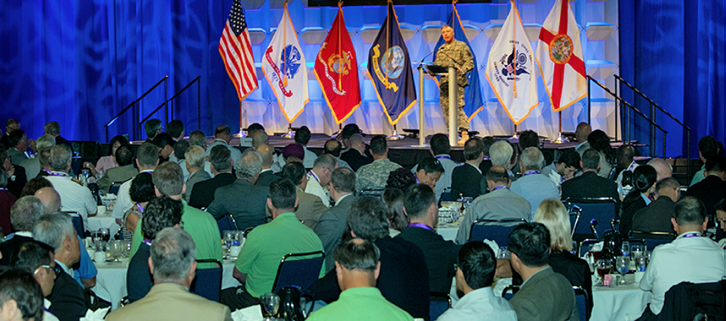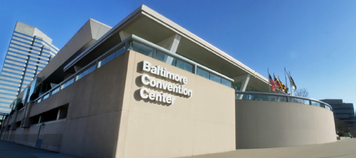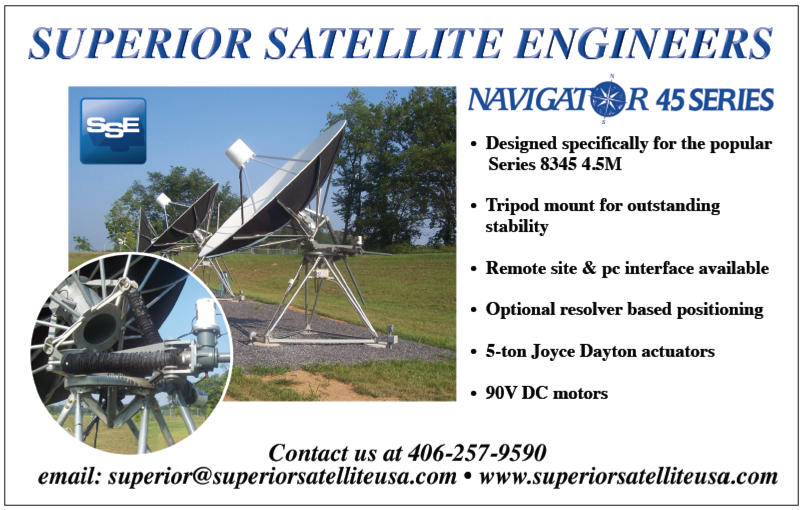When discussing future MILSATCOM needs to protect nations and their citizens, one of the most important considerations is to be aware of what may be coming to harm or interfere with a national process and to know what tools are available to immediately offset such incursions.

As far as intelligence gathering regarding the acquisition of technologies that can be employed by MILSATCOM professionals against opposition infiltration, events that gather the companies and the personnel who have the subject-matter expertise to present viable solutions are truly worth their consideration for attendance.
One such event is MILCOM 2016, which this year will run from November 1st through 3rd at the Baltimore Convention Center in Baltimore, Maryland, USA.
Operating with the tagline “Secure Communications At The Speed Of Cyber,” MILCOM 2016 provides the convenience of assembling a plethora of information at a single venue as well as providing attendees with the knowledge they are seeking direct from those who are “in the know.”
That valuable knowledge is offered by various military/agency/government agencies and organizations to dozens of commercial companies, all of whom are involved in producing the numerous products and the technologies able to counter hostile actions through the application of assured and reliable communications.
From the start of the event to the closing day, command, control and communication challenges are presented, from the ongoing research and development of yet-to-be announced offerings to the application of existing solutions to the presentation of future needs, products
and assessments.
The breadth of the requirements, the pace of change as well as the state of play of the C4I markets that serve the Department of Defense (DoD), federal agencies, multinational entities are explored by the leaders in government, industry and academia.
With a Cyber domain that is rapidly expanding, the issues and solutions to the challenges presented to those within the MILSATCOM world are without peer at MILCOM 2016.
This event brings technical presentations, discussions, tutorials and nearly 30,000 square feet of industry exhibits under the Baltimore Convention Center’s roof.
This year, there is also an expansion of government organizations and exhibits in attendance. Additionally, there will be presented more than 300 unclassified and restricted technical presentations, tutorials and panel discussions, all led by experts in Command, Control, Communications, Computers and Intelligence (C4I), with a broad array of continuing education credits are also offered to attendees.
A look at the programs available on the first day, as of this writing, offers an overture of the expertise attendees can expect at MILCOM 2016.

DAY 1: November 1, 2016
Restricted Technical Panel
System Perspectives and Integrated Electronic Warfare (EW) and Communications
Tuesday, November 01, 2016
9:00 AM - 10:30 AM
Organizer/Moderator: Captain Kenneth Park, USN (Ret.), Senior Manager, Harris Corporation
Synopsis: The Pentagon continues to look for areas of investment and strategic advantage in this era where technology is defining modern warfare. Ensuring dominance over the electromagnetic spectrum is an imperative that cannot be overlooked with the increasing capabilities of traditional and emerging adversaries fast developing technologies. Today, links between electronic warfare and cyber systems are nearly as inextricable as those between data/communications and the operations that depend on them. This panel will examine the growing importance of information assurance on the battlefield through the lenses of electronic warfare and cyber warfare to highlight the next phase of operational threats and technologies to address them. This panel will seek to answer some fundamental questions such as:
• How are electronic warfare (EW) and cyber related? What can be achieved by combining these capabilities (i.e., w/ sensors, communications and networks)?
• How are adversaries deploying EW and cyber solutions on the battlefield? What’s their next step?
• What is the current state of affairs in pairing EW and cyber capabilities for the field and operationalizing?
• What types of systems and investments are needed to overcome adversaries in the near-, long-term?
Technical Panel
Confronting the Ever-Evolving Threat Landscape

Tuesday, November 01, 2016
9:00 AM - 10:30 AM
Approved for 1 CompTIA CEU: Security+and CASP
Organizer: Lance Dubsky, Chief Security Strategist, FireEye
Synopsis: How does threat intelligence improve an organizations or a nation’s security posture? This panel will discuss threat intelligence quality, security operations maturity, review threat intelligence in offensive and defensive applications, discuss how threat intelligence sharing will work in theory and in practice, the viability of STIX as a threat sharing structure, and highlight cases where intelligence findings led to read-world security gains.
Lance Dubsky, FireEye Chief Security Strategist will navigate the panel through the threat intelligence paradox to help leaders understand how to apply it and reduce organizational risk.
Technical Panel
Tactical Data Link (TDL) Developments
Tuesday, November 01, 2016
9:00 AM - 10:30 AM
Organizer: Delbert Jones, CSRA
Synopsis: The panel will address Tactical Data Link (TDL) interoperability issues in the Joint, Allied, and Coalition Forces environments. Panel members will provide multiple perspectives, including strategic policy influences, data link and waveform specifications and standards, and warfighter requirements.
Focus includes the following: status on the Joint TDL Migration Plan and its formal release to foreign partners; status of the services’ programs related to the Joint Aerial Layer Network (JALN); the benefits of the Interoperability Enhancement Process (IEP) and it’s supporting tools; and COCOM priorities driving TDL investments.
Technical Panel
Cyber Risk: Challenges, Mitigation, and Modeling
Tuesday, November 01, 2016
2:00 PM - 3:30 PM
Approved for 1 CompTIA CEU: A+, Network+, Security+, and CASP
Organizer: Bharat Doshi, Senior Research Scientist (Cyber Security), ST, Communications-Electronics Research Development and Engineering Center (CERDEC), U.S. Army
Synopsis: Cyberspace has permeated all aspects of personal and business life, critical infrastructures, and national security apparatus. The advent of Internet of Things, Cyber Physical Systems, system-on-a-chip, man-machine systems, heavily connected platforms, and autonomous systems promise that the role of the cyberspace will continue to expand and our reliance on timely and secure delivery of accurate information to humans and machines will continue to grow.
The spread of cyberspace will enlarge the attack surface and increasing reliance could lead to severe consequences of successful cyber-attacks. Connectively, Cyber Risk (likelihood of a successful attack x consequence of the attack) could continue to grow unless technologies and operational guidelines are designed to control the likelihood and consequence to minimize the Cyber Risk.
This panel will discuss current and future Cyber Risk from various categories of adversaries, approaches to modeling and quantifying this risk, and novel approaches to mitigating the risk.

Technical Panel
Distributed Terminals and Architecture for Tactical SATCOM On the Move
Tuesday, November 01, 2016
2:00 PM - 3:30 PM
Organizer: Tat Fung, Electronics Engineer, Communications-Electronics Research Development and Engineering Center (CERDEC), U.S. Army
Synopsis: A SATCOM on the move (SOTM) capability is needed on Army tactical vehicles. Integration of these systems has become the primary challenge as the vehicles are increasingly crowded with many other combat and communications systems.
The concept of a Distributed SOTM Terminal (DST) in an Open Standard Architecture (OSA) is being developed to mitigate the platform integration challenges, reduce cost and speed procurement and fielding. It is envisioned that Distributed SOTM Terminals will allow the additional integration flexibility needed bring a SATCOM capability to these tactical vehicles.
The intent of the Open Standard Architecture is to reduce procurement cost and schedule in the engineering and development of this capability across multiple types of platforms. This panel session will discuss the challenging requirements that lead to the development of Distributed SOTM Terminals, the partition of the terminal into various components and open standard interfaces being developed between each component.
The panelists will provide perspectives from the military and industry on: the cost and benefit to the military, the challenges and lessons learned in realizing a design based on an OSA, and the future of Distributed SOTM systems.
Technical Panel
Tactical Data Links—A Way Forward
Tuesday, November 01, 2016
2:00 PM - 3:30 PM
Organizer: Marius Vassiliou, Project Leader and Analyst, Institute for Defense Analyses
Synopsis: Tactical data links must operate in increasingly contested and degraded environments, but current TDLs provide limited protections from advanced electronic attack and surveillance systems. Platforms' data link transmissions are susceptible to detection and receivers are vulnerable to jamming. Data link waveforms and networks also have limited adaptability to changing user demands, channel conditions, and topology changes due to mobility.
Link capacity and network throughput are limited, both due to system design limitations and channel degradations in con-tested environments. Improved architectures are needed to minimize platform detectability, increase system jam resilience, increase user and network capacity in contested and degraded environments, and achieve scalable connectivity.
Such advances will require improvements in existing systems and development of new waveform and systems technologies. These include directional antennas, adaptive beam forming and nulling, novel modulation and coding, frequency agility, and others.
The panel will discuss emerging architectures and technologies for tactical data link evolution.
Tutorial
Wireless Cyber Operations: The Anatomy of an Attack
Tuesday, November 01, 2016
2:00 PM - 4:30 PM
Approved for 1 CompTIA CEU: A+, Network+, Security+, and CASP; 1 GIAC CPE
Instructor (s): Jack Burbank and Elizabeth Alonzi
Synopsis: This tutorial aims to provide attendees with practical knowledge of how to both secure and attack several key commercial wireless networking technologies. The tutorial will first provide attendees with a theoretical treatment of wireless network security and information operations.
The tutorial will then provide an overview of many of the key security software tools available to a network security professional and numerous examples of attack methods utilizing these tools. This tutorial will provide several in class demonstrations so that attendees will gain an understanding of how to use these tools, with a focus on the Kali Linux security suite and Cobalt Strike.
The proposed tutorial will utilize several computer systems and wireless technology devices, provided by the instructors, that will provided attendees with demonstrations of several classical wireless vulnerabilities with a limited number of interactive hands-on activities.
The instructors will provide attendees with USB thumb drives loaded with Virtual Machines (VMs) that has preloaded and configured all required software tools for the course.
Attendees can bring their own laptop computer equipped with a VM player (available as a free download from VMWare) if they wish to participate in the hands-on activities (not required).
The exhibit hours for this event are:
Tuesday, November 1st, from 1:30 PM to 6:30 PM
Wednesday, November 2nd, from 10:30 AM to 4:00 PM
Thursday, November 3rd, from 8:00 AM to 12:30 PM
MILCOM 2016 is co-sponsored by AFCEA International and the IEEE Communications Society, MILCOM is a unique collaboration. MILCOM is the one conference where command, control, and communication challenges are presented and discussed end to end—from research and development through existing solutions to future needs.
This event offers industry the opportunity to understand the breadth of requirements, the pace of change, and the state of play in a variety of C4I markets serving DoD as well as federal agencies, and multinational entities. Leaders across government, industry, and academia address their needs, issues, and solutions.
In the MILCOM tradition, the technical program features numerous continuing education opportunities, paper presentations, panels, and tutorials. The technology engagement hall serves as the central hub for collaboration and innovation. Attend to discover hundreds of technologies and solutions.
Those who produce MILCOM 2016 include…
AFCEA International, which was established in 1946, is a non-profit organization serving its members by providing a forum for the ethical exchange of information. AFCEA is dedicated to increasing knowledge through the exploration of issues relevant to its members in information technology, communications and electronics for the defense, homeland security and intelligence communities.
AFCEA supports local chapters, sponsors events, publishes the award-winning SIGNAL Magazine, promotes education through the AFCEA Educational Foundation, and provides member benefits—all with the purpose of equipping its members to meet government’s challenges and to further their careers. AFCEA and its chapters provide a common ground for learning that is unquestioned in its integrity and unequaled in the reach of its relationships. More than 32,000 members participate through their 150 chapters and student chapters across the globe.
The IEEE (Institute of Electrical and Electronics Engineers, Inc.) is the world’s largest technical professional society. Through its more than 400,000 members in 150 countries, the organization is a leading authority on a wide variety of areas ranging from aerospace systems, computers and telecommunications to biomedical engineering, electric power and consumer electronics.
Dedicated to the advancement of technology, the IEEE publishes 30 percent of the world’s literature in the electrical and electronics engineering and computer science fields, and has developed nearly 900 active industry standards. The organization annually sponsors more than 850 conferences worldwide.
The IEEE Communications Society founded in 1952 and has over 30,000 members. It is the second largest of IEEE’s 38 technical societies. It has become the major international forum for the exchange of ideas on communications and information networking.
To register for MILCOM 2016, please access
http://events.afcea.org/milcom16/Public/Content.aspx?ID=62537


